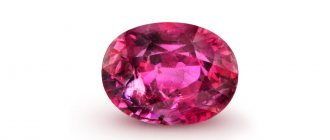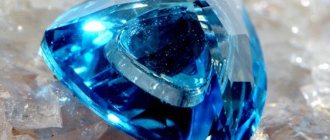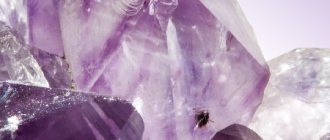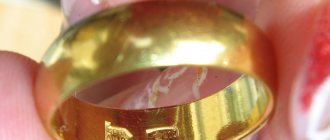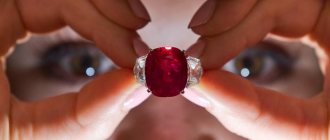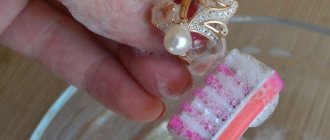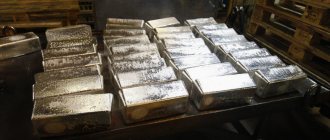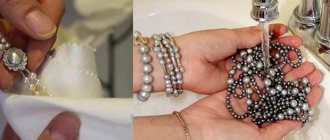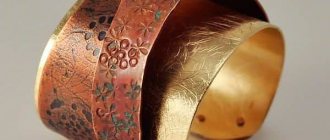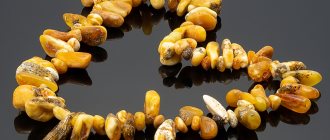How the research was conducted
For a long time, complex experiments were carried out that involved the production of various beryllium silicates. The result of the experiments was that the smallest crystals of emerald were obtained. The best results were obtained when scientists placed silica and alumina and beryllium in a platinum crucible under a coating of lithium dimolybdate. The entire structure was placed in an autoclave and exposed to high temperatures for 24 hours.
Depending on the stage of growing hydrothermal emeralds and the increase in temperature, changes occurred that led to the formation of crystals of the required mass and length. The chromium mixture provided the stones with a green color, and it was the same as natural ones.
Today, the cultivation technology has remained virtually unchanged, only the equipment has been improved, which makes it possible to control and create hydrothermal stones of different sizes. In addition, synthetic specimens are resistant to ultraviolet rays, they do not destroy them and do not change color. Also, nano-emerald is not afraid of heat and can withstand temperatures up to 650°C and exposure to acids. It cannot be said that in terms of physical properties, hydrothermal emeralds are much stronger and more durable than their natural counterparts, but they are less susceptible to mechanical stress and destruction because they do not have cracks or chips.
How to spot a fake
Since natural emerald costs a lot of money, it would be a shame to receive an imitation of it instead of a natural stone, so it is important to be able to distinguish a real stone from tourmalines, zircons, cubic zirconia, jade, quartz, alexandrite, rhinestones and glass. Professionals know that the authenticity of a mineral can be determined using ultraviolet light, since a real stone takes on a red tint in its rays
It is also worth remembering that a real nugget has inclusions. In addition, the mineral, although not the most durable, is still harder than its imitation, for example, glass
Professionals know that the authenticity of a mineral can be determined using ultraviolet light, since a real stone takes on a red tint in its rays. It is also worth remembering that a real nugget has inclusions. In addition, the mineral, although not the most durable, is still harder than its imitation, for example, glass.
Also, the artificially grown mineral is not afraid of ultraviolet rays and does not lose its color under their influence, unlike the real thing. Hydrothermal emerald is more durable than the one that developed in nature.
Despite the apparent advantages over natural emeralds, synthetic ones have a lower cost and are not highly valued by experts in gemology. They are quite suitable as insert stones for jewelry used in everyday wear, while a product with a real emerald is best worn for any special occasions in order to preserve its beautiful appearance for as long as possible.
Goodbye, dear readers! Don't forget to subscribe to our updates and tell your friends about interesting articles using social networks.
Team LyubiKamni
Types and colors of stone
Initially, synthetic laboratory stones, like natural stones, are colorless (leucosapphires). By adding impurities, the desired color can be achieved. Synthetic sapphire shades and additives:
- blue, blue, violet, cornflower blue – iron and titanium;
- pink, red, burgundy, orange-pink – vanadium, chromium, titanium;
- green – chrome tourmaline;
- white – no impurities;
- yellow – beryllium.
Scientists have learned to grow synthetic star sapphire. These are stones that have an asterism effect - if you look through it into the light, you get the impression that there are clusters of stars inside.
Changing the shade or improving the appearance of a gem is aimed at increasing its cost and commercial qualities. This is done through various influences:
- Diffusion is the ability of some substances to penetrate into the composition of other compounds, replacing the original molecules. The crystals are treated with beryllium salts under high pressure and temperature, resulting in an enhanced asterism effect. Such stones are called diffusion stones.
- Ultraviolet irradiation makes the color richer and thicker. This is a refined sapphire.
- Heating to 1500–2000 °C. This is also a method of refining a gem, in which the color of the mineral changes, for example, from pink to blue.
Diffusion and refined sapphires are very similar to natural minerals; only an experienced jeweler can suspect the treatment.
Separately, there is declassified sapphire - a mineral of natural origin, but of low quality, which is why it cannot be assigned to any specific class in terms of transparency or color. Opaque, with dark inclusions, nondescript, it does not look like the usual beautiful crystal.
History of invention
For the first time, the French scientist Auguste Victor Louis Verneuil thought about the possibility of creating artificial precious stones. His journey of invention began in 1886 and lasted 16 long years. Only after this time did he announce the discovery and give comprehensive information about the results of the long experiment. He said that using high temperatures and the drop precipitation method, it is possible to obtain synthesized minerals, in particular blue corundum. Subsequently, this method became known as the Verneuil method. Afterwards, other scientists improved this method and created their own based on it. But for the first time, the discovered method is still successfully used in the chemical industry.
We start with a visual inspection
Dipping an emerald into acid to test it is useless. Both natural stone and synthetics do not change color. Also, both crystals react equally to high temperatures. If it is above 700 degrees, the crystals will become discolored. But such testing methods are only possible in laboratories. Below we will teach you how to check the authenticity of jewelry yourself.
The synthesis of emeralds began in the second half of the 19th century. Artificial green crystals were grown in laboratories in Germany. The production is based on water, high and low temperatures, so the method itself and the resulting crystals are called hydrothermal (HT). The first copies left much to be desired.
Gradually the method was improved. And since 1935, Igmerald appeared. The word includes the abbreviation of the organization that grew the emerald (German) and part of the medieval name of the stone.
In terms of durability, artificial emeralds are superior to those created by nature. And upon visual inspection they have much fewer defects. It is impossible to notice microscopic cracks in them with the naked eye. Accordingly, veins and inclusions are much more often found in a natural mineral. Another obvious advantage of GT crystals is that they do not deteriorate under the sun.
Cost of stones
An artificial emerald cannot be considered a fake. Since the chemical components of the process are preserved in both cases. But if the seller does not disclose the origin of the stone and this information is not indicated on the product tag, then you can sue the store or factory for fraud. A cultured emerald is usually labeled as "GT" on the tag.
Silver ring with hydrothermal emerald
To distinguish a fake or artificial stone from a natural one, you should contact a gemologist for an examination. If the stone is grown in a laboratory, the specialist will note:
- Tubular inclusions in the structure or gaseous bubbles that are formed due to the entry of air.
- Iron oxide impurities that are absent in natural stones. In this case, impurities will be visible only under multiple magnification.
And natural stones will never be perfect. Due to fragility and impurities, their structure will certainly contain defects, irregularities, cracks, and sometimes there may be opaque areas. Synthetic emerald will look more beautiful as part of the product.
Stones that are synthesized artificially have a low cost. One large copy can be purchased from five dollars. Stones are actively set into products and also look beautiful in public. True, in this case the cost will be determined based on the weight of the precious metal, alloy and complexity of the jeweler’s work. In stores you can purchase earrings, rings, bracelets, pendants with hydrothermal emerald or buy a complete set of jewelry.
The magical and healing properties of the stone are not fully understood. Some esotericists say that the base of the mineral is natural, which means that the stone will act at half its strength. Others believe that when grown in a laboratory, emerald does not receive energy from the Earth and therefore cannot carry healing and magical properties. And perhaps this is good, because the stone will not affect a person’s character in any way, it does not depend on the signs of the zodiac and the lunar calendar, which means that it is suitable for everyone.
Nevertheless, astrologers recommend wearing the stone for those who want to calm the nervous system. And also use emerald during quarrels and conflicts in the family and with relatives.
Hydrothermal emeralds are a godsend for those who love this stone, but cannot afford a full-fledged natural specimen. It will also appeal to environmentalists and opponents of mineral mining. Such products are selected according to style, including the setting of the stone.
Properties and distinctive features of Colombian emeralds
Origin, properties and distinctive features of emerald
Where and how are emeralds mined in Russia?
History and features of the world's largest emerald
Use in jewelry
This stone is often processed and placed in a decent setting even by the most reputable jewelry houses. The use of hydrothermal emerald is not bad manners at all, of course, provided that the price is adequate and there is no falsification.
When creating jewelry, jewelers are guided by certain rules. GT emeralds require rational additions. For example, earrings with hydrothermal emerald are decorated with cubic zirconia, rock crystal crystals, and other hydrothermal gems. The most commonly used metals are ordinary yellow gold and silver.
Hydrothermal treatment
Upgrading Low-Grade Stones
The hydrothermal method is also used to improve the quality characteristics of natural minerals. It allows you to improve their color, hardness, density and create the desired purity of light refraction.
An ennobled crystal cannot be considered natural; the documents must indicate that it has been processed.
Speed of "maturation"
The hydrothermal method imitates the natural conditions in which the stone is grown, but it speeds up all the processes. If in the natural environment a gem is formed in 1-2 ml of years, in the laboratory it will be grown in 4 weeks.
This is how sapphires, rubies, emeralds, quartz, corundums, spinel, garnet (gadolinium gallium), morganite are obtained... Standing apart from this list are cubic zirconias, crystals that have no analogues in nature.
The process of creating a stone occurs by heating the raw material (up to 6000 degrees) and cooling the sides of the gem with ice water
It is important to control the growth rate of the crystal, otherwise it will become deformed. It is slowed down due to the pressure in the chamber, temperature and concentration of the supplied solution
Production
There are five melting methods (their detailed descriptions are not disclosed, this is a trade secret):
- Czochralski;
- Garnissage;
- Verneuil;
- Stepanova;
- Bagdasarova.
There are two methods. To create alexandrites, sapphires, and rubies with emeralds, synthesis from aqueous solutions (low temperature) is used. Opals and malachite are grown using the Flux method.
Care
Hydrothermal minerals require the same careful handling as natural ones. Jewelry should be stored in separate boxes and removed before showering and cosmetic procedures. They must be washed every month with a lukewarm soapy solution. Then polish with a suede flap.
Is natural sapphire different from synthetic sapphire?
As already mentioned, at first glance, even experienced craftsmen sometimes cannot tell which specimen they are dealing with. If a jewelry store or jewelry show has a good reputation, none of the sellers or event participants will talk about the synthetic stone being natural.
It can be difficult to convince ardent fans of natural sapphires that laboratory stones can be of much higher quality than real ones. First of all, this means the absence of impurities; the manufacturing process is constantly monitored by professionals. The crystal structure of hydrothermal sapphires is much cleaner; these stones have virtually no cracks or air bubbles.
Such high quality is the first sign that allows you to distinguish an artificial mineral from a natural one. For example, if the stone has a hue that is “suspiciously” clear in appearance, it is most likely a hydrothermal sapphire. Natural sapphires most often contain inclusions in the form of mineral substances visible to the naked eye and natural microcracks.
Only the buyer has the right to decide which type of mineral is best, but any type of gem can be liked, including those created by human hands.
External signs of an artificial gem: are there any differences?
The chemical composition and physical properties of the original and the imitation are identical in almost all respects. It is almost impossible to visually distinguish a synthesized emerald from a natural one. Only an experienced jeweler can handle this task and only carry out analysis in a laboratory if possible.
Hydrothermal gems revolutionized the jewelry world with their appearance and here’s why. Now everyone can afford to buy a magnificent stone that is no different from a real stone at an affordable price.
Artificially grown minerals have several features.
- Firstly, they differ in the presence of tubular inclusions.
- Secondly, the composition includes brown iron impurities.
It is impossible to identify a synthetic mineral by eye. They have an identical shape to the original, with minor defects indicating naturalness, including unevenness and barely noticeable cracks. Almost all synthesized gems are green with a hint of blue or dark. They are impeccably transparent and often have visible air bubbles inside them.
Who is it suitable for?
The stone is most suitable for strong personalities. It enhances internal potential and contributes to the implementation of the most daring ideas. Emerald does not like deceivers, scammers and people prone to hysterics. It prevents negative energy in every possible way.
Astrologers advise hot-tempered and nervous people to wear emerald jewelry. He will extinguish attacks of anger and frustration in time.
The stone is also recommended for those whose mood often changes. According to the zodiac sign, this is Cancer, but in any sign there are individuals who are distinguished by such changes in the psycho-emotional background. The green mineral stabilizes the state, gives peace and tranquility.
People whose professions involve documents and money, as well as large managers and businessmen, need the energy support of a crystal. Emerald will give you composure when making important decisions, direct your thoughts in the right direction, and sharpen your intuition.
Precautionary measures
Unfortunately, in our time, some “masters” manage to make a fake of a fake. That is, to make not just a fake emerald, but a fake hydrothermal emerald, which is completely out of the question. Therefore, you need to know some of the features of laboratory stone so as not to buy a piece of glass instead.
Hydrothermal emerald is stronger than glass, which is why it is so difficult to process. You can't just scratch it. Artificial emerald also has a deep color, sometimes with a blue tint.
Ask sellers for quality certificates, do not trust sellers without documents and too low prices. Focus not only on the type of stone itself, but also on your own feelings - sometimes intuition can tell you a lot.
Real experience of growing artificial emerald at home
https://youtube.com/watch?v=_L3esAkZ9Hc
Is it possible to grow emerald at home?
Growing your own emerald at home is possible, but it is a difficult process. You will need chlorine and sodium. How to do this step by step?
Add brilliant green or any other dye of a suitable color to a container of hot water, as well as about one and a half kilograms of salt. The composition is placed in a water bath and cooked for two hours. As the water boils, liquid is added (not into the container with salt). When sediment forms, turn off the fire.
The sediment is filtered and the largest formations are selected. Such a grain is hooked with a loop of thread. Cover the container with a lid and leave it alone for several weeks. During this time, a real homemade gem can grow. It is very fragile, so it cannot be inserted into products.
You need to approach the purchase of a ring or earrings with emeralds consciously. After all, instead of a noble stone, fakes are often slipped in. These could be cheaper gems or synthetic stones. They can be identified by eye, as well as by certificates from the seller from a gemological laboratory.
Features of the technology
Unlike natural emeralds, hydrothermal emerald has virtually no internal defects due to its high growth rate. To detect differences, you need to use a magnifying glass with tenfold magnification or a special light filter.
The natural mineral will glow red and have a large number of voids. As a result, the hydrothermal emerald created through synthesis looks much more presentable. There are no voids in it, a uniform green tint means that you are looking at a crystal that was helped to grow in laboratory conditions. Read more in the article “How can you distinguish a real emerald from an artificial one.”
Modern technologies make it possible to control the hydrothermal regime at each stage of crystal growth. Even at home, specialists can grow a nano emerald, the properties of which will fully correspond to the programmed parameters. Read more in the article “Is it possible to grow emeralds at home?”
How emeralds are counterfeited
Prices for good quality gems start from 100 thousand rubles. Not everyone can afford jewelry with such minerals, which is why fakes are so common. The most popular imitation is a synthetic high-quality copy of emerald, called hydrothermal stone.
But cheap fakes have nothing in common with emeralds. Synthetic stones are simply glued together with green stone, which colors the “glass” and gives the effect of natural inclusions. The resulting seams are hidden by the framing.
There are versions of emerald copies glued together from three plates. In this case, the plates can be either synthetic or natural. This is a complex type of fake that only a professional can identify.
History of alexandrite
The modern history of the mineral, as well as the acquisition of its name, began in 1834. Until this time, the stone was mentioned in the Indian epic Mahabharata. From deeper times, a legend has reached us that an amazing gem witnessed how Cain killed his brother Abel. Impressed by the cruel spectacle, the mineral began to turn blood red every evening.
In Russia, the first information about alexandrite was published by the Finnish mineralogist Noredenskiöld. The scientist led the study of the Ural Mountains, where a green mineral similar to emerald was discovered. Noticing that the stone was changing color, he handed it over to the jeweler Perovsky.
Perovsky, admired by the beauty of the gem, decided to give it to the future Emperor Alexander II as a gift when he came of age. The jeweler named it alexandrite in honor of the Russian Tsar.
The Silver Age poet Maximilian Voloshin, who was truly in love with the magical beauty of the stone, asked his friends to come to his grave with stones, not flowers. The Russian poetess N.A. also mentions alexandrite in her poems. Teffi, who lived in the 19th century.
The German artist F. Kruger, who painted a portrait of the Grand Duchess, mother of Alexander II Alexandra Feodorovna, depicted her in Russian folk dress and kokoshnik. He decorated a simple suit with a scattering of sparkling alexandrites (see photo), thereby emphasizing the status of the woman in the portrait.
The gem was first described in the ancient Indian epic and called “peacock eye”. After this, there is no mention of the stone until 1834, when it was first described by a Finnish mineralogist.
While working on sampling the rock, on April 17, 1834, he found a green, cloudy stone and considered it a not too pure emerald. In the evening, having decided to take a better look at the find, Nordenskiöld brought the mineral to the flame of a candle, the stone turned purple-red. On this day, the future heir to the Russian throne celebrated his coming of age.
In honor of Alexander II, the rare stone was named alexandrite.
According to the second version, alexandrite was found by a descendant of the stone-cutting dynasty, Yakov Kokovin, while mining emeralds on the Tokova River in the Urals. Struck by the variability of the color of the mineral, Kokovin sent a sample to St. Petersburg to Count Perovsky, who at that time headed the Department of Appanages.
All the rare gems mined in the Urals passed through his hands. At first, Perovsky gave the stone the name diaphanite, that is, bright, but then, deciding to use the opportunity to gain the favor of the monarch, Perovsky changed the name to alexandrite and hastened to present the stone to the future emperor.
During the years of the USSR, alexandrite was actively mined in the Urals, but they did not go on free sale, becoming the property of the state. Instead, artificially grown corundum with an admixture of vanadium was used, which looked very similar to the original.
The mineral is formed at certain temperatures and humidity levels in greisen and pegmatites through the chemical reaction of beryllium with chromium in the obligatory absence of ubiquitous silicon. Such conditions are very rare, because there are few deposits and mining sites.
DIFFERENCES OF NANO EMERALDS
Nano-emerald is a piece of jewelry that accurately replicates natural emerald.
- The prefix “nano” initially showed that the original value was reduced by
- a billion times. Now “nano” refers to new technologies.
- Nanoemerald has become a new achievement of science, capable of perfectly reproducing an emerald.
- Sapphires and emeralds are expensive gems, which is why hydrothermal gems are often used in the jewelry industry recently.
Nano-minerals are practically no different from natural emeralds, but there are still small differences:
- hydrothermal green beryl contains tubular cavities that are visible under a microscope;
- Iron oxide visually appears as brown dots.
What are nano emeralds
Hydrothermal emeralds are artificially grown analogues of real emeralds.
- Although nano-emerald is artificially created, this does not mean that hydrothermal gems can be called fake.
- Artificially grown stones are NOT called fake because they are cultivated from components left over from the processing of natural emeralds.
- Hydrothermal minerals have clear cuts on the crystals and clear color, and the transparency is due to the absence of foreign impurities.
History of artificial cultivation
Many scientists have tried to reproduce copies of precious minerals from various materials.
For a long time, experiments were carried out to create beryllium silicates. As a result, scientists were able to obtain the smallest crystals:
- In 1891, Auguste Verneuil of France created a synthetic ruby.
- The first synthetic emerald was also obtained by the French Perret and Hautefel.
- In 1911 in Germany the method was improved.
- Until the 60s of the 20th century, constant developments were carried out in secret to create an analogue of real green emerald.
- In the 60-80s of the XX century in the Soviet Union, synthetic stones framed in gold were very popular.
- Nowadays, artificial emeralds from Thailand are very popular, where products are made from gold and silver by hand. Thanks to low import duties on minerals, high-quality jewelry is cheaper in Thailand.
We recommend: RODOLITE - odorless rose Technological processes changed slightly, but new equipment appeared that made it possible to control the process and create stones of various sizes.
The technology for growing nano-emeralds involves using water and high temperature.
Advantages and disadvantages
Nano-stones are practically no different from their natural counterparts and even have some advantages:
| DURABILITY | |
| CRYSTAL TRANSPARENCY |
|
| UNIFORM STRUCTURE |
|
| UV RESISTANCE |
|
| INCREASED IMPACT RESISTANCE | |
| ANY SIZES AND SHADES |
Nano-emerald has almost ideal properties and has only 2 drawbacks.
- An artificially grown stone, unlike the original, necessarily contains gaseous bubbles.
- Some connoisseurs of natural stones argue that grown emerald does not have the same magic and energy as the natural one, which nature has created for thousands of years.
Emerald products and jewelry
Tiara of the Duchess of Anjou, contains 40 emeralds and 1031 diamonds.
Made in 1819-1820. in Paris Emerald is used for jewelry of all types. They are worn on special occasions, with a wardrobe of the same level.
Pairs with rubies or sapphires. The height of chic is a scattering of diamonds around a stone in gold or platinum.
Gold jewelry is the best gift for a woman on a special occasion. Earrings, bracelet or necklace are given for the birth of a child. An emerald ring is bought for an engagement or wedding.
The men's assortment includes a massive platinum or silver ring, a tie clip, and cufflinks with a rectangular translucent emerald.
The modern bohemian trend is deliberately careless large jewelry with unpolished inserts. Silver is light or blackened.
The stone is valued based on color and origin (stone cost per carat):
- bright green - $2000;
- pale - $500;
- artificial - $200.
Price of emerald jewelry:
- in gold: earrings - $130-500, ring - $100-300;
- with diamonds: ring - $200-500, pendant - $70-200, earrings - $150-700.
Silver accessories are equipped with nanocrystal inserts. The price of such emeralds is several times less than natural material. For example, a ring costs about $30, earrings - $25-30.
Who is suitable for hydrothermal emeralds?
Stones grown in the laboratory contain natural raw materials. Therefore, hydrothermal crystals are endowed with living energy, used in esotericism and lithotherapy.
Who is it suitable for?
When choosing jewelry with artificially produced emerald, you need to find out what the energy of the gem means for each zodiac sign. She favors Taurus, Cancer, Leo, Sagittarius, Libra and Pisces.
Magic properties
Hydrothermal emerald helps maintain peace and prosperity in the family. This means that it is recommended to store products with it in a visible place in your home, because the stone neutralizes negative energy. If you wear jewelry with a gem to an important business meeting, you can achieve success in negotiations. Emerald is a stone of truth, therefore it helps its owner to protect himself from communication with deceivers and dishonest people. In case of anxious thoughts, it helps to cleanse the mind of negativity.
Esotericists use the gem in rituals aimed at healing. Thus, drinking water infused with green crystals helps cleanse the body of toxins, improve immunity and recharge with vigor.
Not suitable for individuals who are characterized by greed, unscrupulousness, and a penchant for scams. Emerald will harm such people, as it will bring only troubles into life.
Can it be used as talismans?
Crystals grown from natural raw materials in the laboratory can be used as talismans. They, like natural minerals, are endowed with healing energy. But there is an opinion that it is not as strong as that of a specimen formed in natural conditions.
When choosing a talisman mineral, you should listen to your feelings. If contact with a stone causes moral discomfort, deterioration of well-being and irritability, such a talisman should not be worn.
Emerald and zodiac signs
Ring with an emerald
Emerald is a friendly stone, but it is not ideally compatible with all Zodiac signs. The mineral best protects the following signs:
- Twins. Excessive aggression and hot temper of this sign will be replaced by wisdom and composure under the influence of the talisman. Geminis will experience better concentration, improved memory, and will become mentally calmer, more cheerful and responsive. This is a plus for communicating with others.
- Cancer. For hot-tempered and sometimes aggressive Cancers, emerald will give balance and harmony. The amulet will make representatives of the sign self-confident, friendly and open, which will help Cancers find good friends.
- Calf. For them, emerald will become a source of vivid emotions and impressions. The talisman will strengthen intuitive thinking, attention, memory, which is important for concentrating on a goal and moving towards achieving it.
It is not recommended for Scorpios to wear emeralds. There are many more suitable minerals for them. Other signs may not feel the influence of the stone at all or feel it less strongly.
| Zodiac sign | Compatibility> (“+++” is ideal, “+” is good, “-” is bad) |
| Aries | + |
| Taurus | +++ |
| Twins | +++ |
| Cancer | +++ |
| a lion | + |
| Virgo | + |
| Scales | + |
| Scorpion | — |
| Sagittarius | + |
| Capricorn | + |
| Aquarius | + |
| Fish | + |
